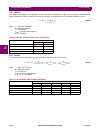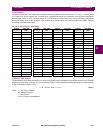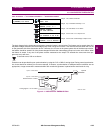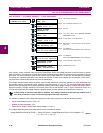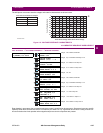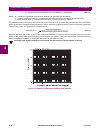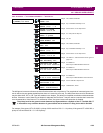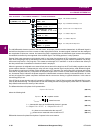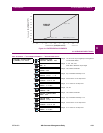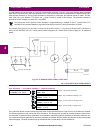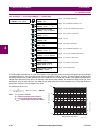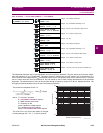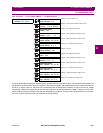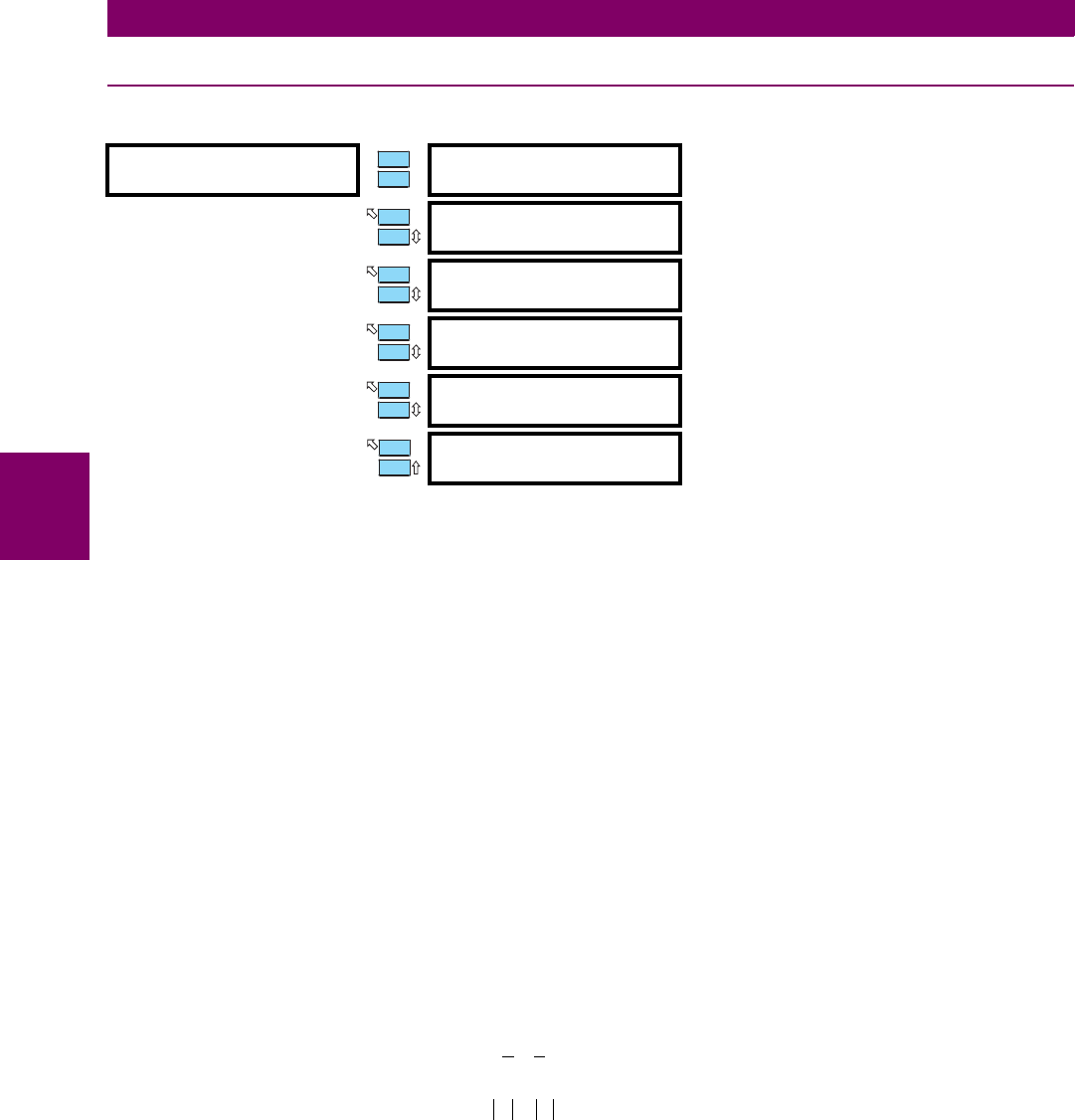
4-30 489 Generator Management Relay GE Multilin
4.6 S5 CURRENT ELEMENTS 4 SETPOINTS
4
4.6.8 PHASE DIFFERENTIAL
PATH: SETPOINTS ÖØ S5 CURRENT ELEMENTS ÖØ PHASE DIFFERENTIAL
The 489 differential element consists of the well known, dual slope, percent restraint characteristic. A differential signal is
derived from the phasor sum of the currents on either side of the machine. A restraint signal is derived from the average of
the magnitudes of these two currents. An internal flag (Diff) is asserted when the differential signal crosses the operating
characteristic as defined by the magnitude of the restraint signal. The Diff flag produces a relay operation.
External faults near generators would typically result in very large time constants of DC components in the fault currents.
Also, when energizing a step-up transformer, the inrush current being limited only by the machine impedance may be sig-
nificant and may last for a very long time. This creates a real danger of CT saturation. In order to enhance the security of
the relay under these circumstances a directional check is employed.
When the generator is subjected to an external fault the currents will be large but the CTs will initially reproduce the fault
current without distortion. Consequently the relay will see a large restraint signal coupled with a small differential signal.
This condition is used as an indication of the possible onset of CT saturation. An internal flag (SC) will be set at this time.
Once the SC flag has been set, a comparison of the phase angles of the currents on either side of the generator is carried
out. An external fault is inferred if the phase comparison indicates both currents are flowing in the same direction. An inter-
nal fault is inferred if the phase comparison indicates that the currents are flowing in opposite directions. In this case an
internal flag (DIR) is set.
If the SC flag is not set, then the relay will operate for a Diff flag alone. If the SC flag is set then the differential flag is super-
vised by the directional flag. The requirement for both the Diff flag and the Dir flag during the period where CT saturation is
likely therefore enhances the security of the scheme.
The differential element for phase A will operate when:
(EQ 4.12)
where the following hold:
(EQ 4.13)
(EQ 4.14)
(EQ 4.15)
I
A
= phase current measured at the output CT (EQ 4.16)
I
a
= phase current measured at the neutral end CT (EQ 4.17)
Differential elements for phase B and phase C operate in the same manner.
PHASE DIFFERENTIAL
[ENTER] for more
PHASE DIFFERENTIAL
TRIP: Off
Range: Off, Latched, Unlatched
ASSIGN TRIP
RELAYS (1-4): 1---
Range: Any combination of Relays 1 to 4
DIFFERENTIAL TRIP
MIN. PICKUP: 0.10 x CT
Range: 0.05 to 1.00 × CT in steps of 0.01
DIFFERENTIAL TRIP
SLOPE 1: 10%
Range: 1 to 100% in steps of 1
DIFFERENTIAL TRIP
SLOPE 2: 20%
Range: 1 to 100% in steps of 1
DIFFERENTIAL TRIP
DELAY: 0 cycles
Range: 0 to 100 cycles in steps of 10
ENTER
ESCAPE
ð
ð
MESSAGE
ESCAPE
MESSAGE
ESCAPE
MESSAGE
ESCAPE
MESSAGE
ESCAPE
MESSAGE
ESCAPE
I
operate
kI
restraint
×>
I
operate
I
A
I
a
– operate current==
I
restraint
I
A
I
a
+
2
--------------------- restraint current==
k characteristic slope of the differential element in percent=
kSlope1 if I
R
2CT×<= ; k Slope2 if I
R
2CT×≥=



